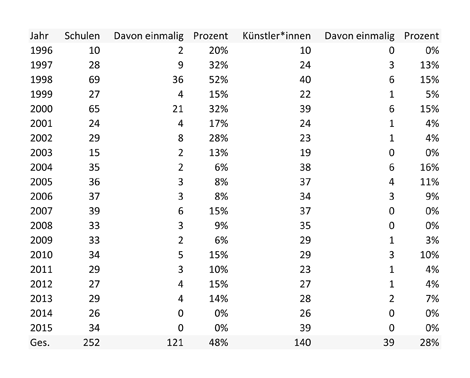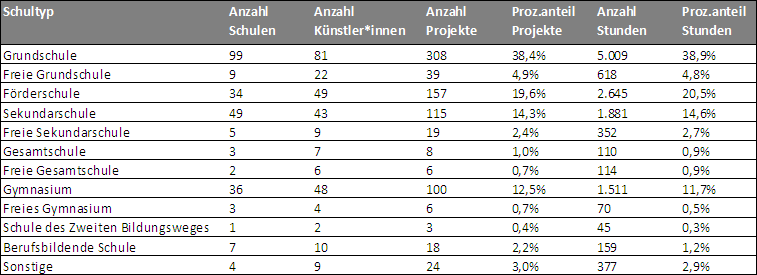The two stakeholder groups, schools and artists, were active to very different degrees within the project. The main trends are highlighted below, in some cases in direct comparison.
First, a general overview of the number of participants in the individual project years. It is already apparent here that, over the twenty-year period under review, almost half of the schools participated in the project for just one year, while only just over a quarter of the artists did so.

The two groups also differ significantly in terms of the number of individual projects carried out. This can be seen both in the overview and in the detailed presentation.
The distribution of the individual projects across the different types of schools and school types, both in total and in relation to the respective project years, also provides a revealing picture. The consistently high percentages of elementary school and special schools in the project volume are particularly striking. However, due to the lack of detailed information on the specific project processes, it is only possible to speculate on possible reasons. However, the varying degrees of willingness of the individual school types to integrate special projects into their regular school day can certainly not be dismissed as an influencing factor in this context.


On the basis of the data, however, a reliable statement can be made about the horizons of experience of the participating artists in the different types of schools. However, the question of the extent to which personal preferences and concrete experience play a role in project design cannot be answered either.
